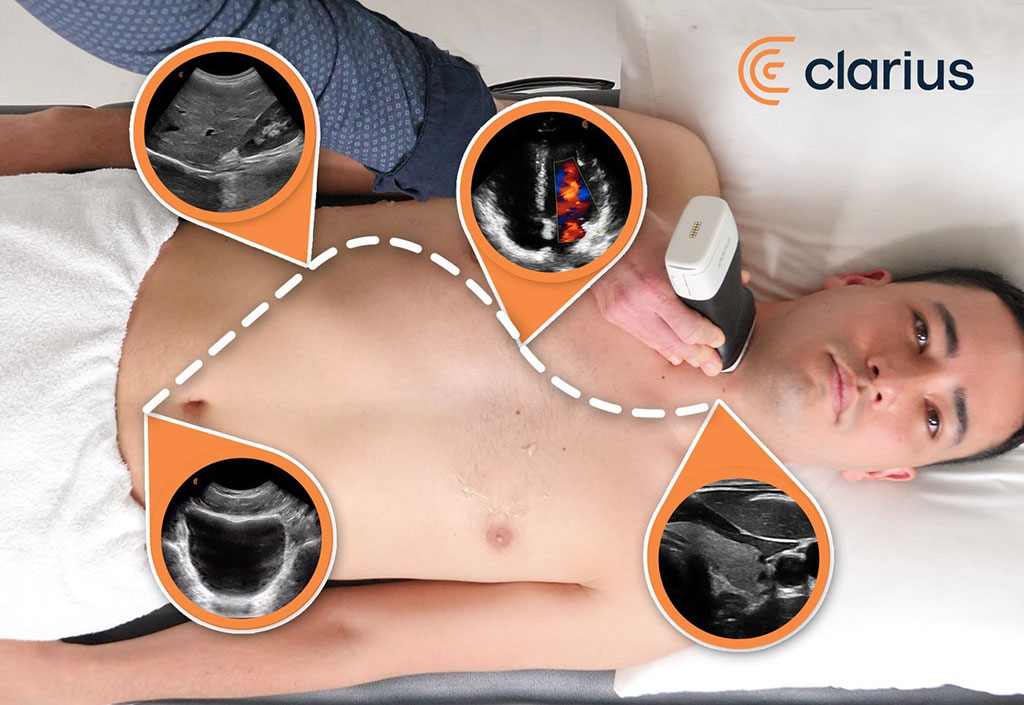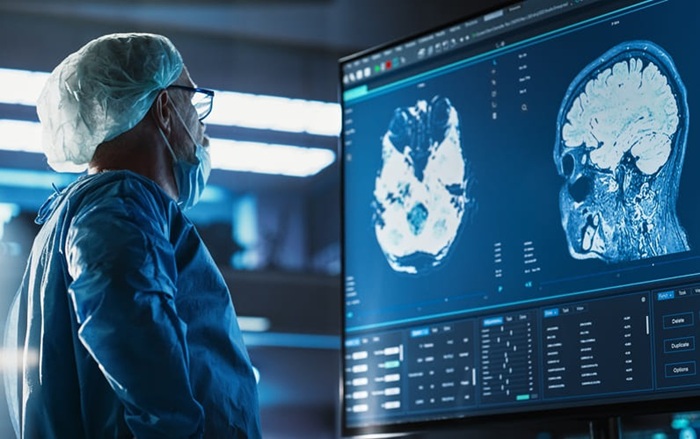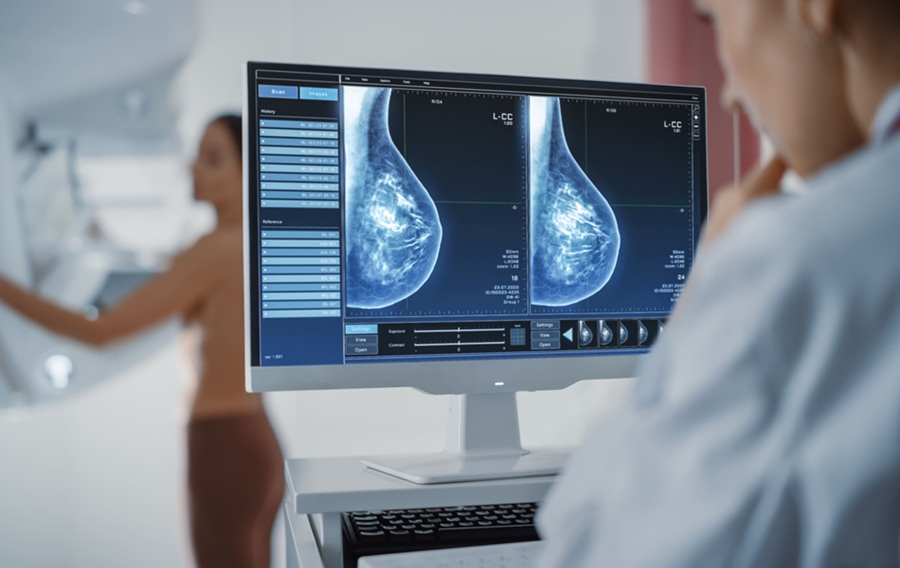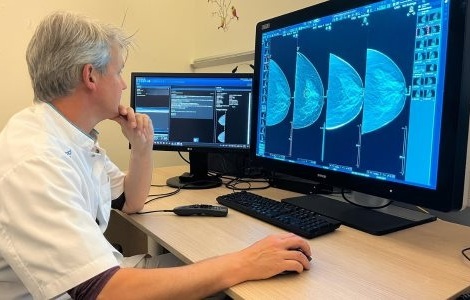New Ultrasound Scanner App Automatically Detects Body Anatomy 
|
By MedImaging International staff writers Posted on 02 Jun 2021 |

Image: Clarius high-definition ultrasound scanners now enable clinicians to quickly examine the abdomen, heart, lungs, bladder, and other superficial structures (Photo courtesy of Clarius Mobile Health)
An advanced ultrasound scanner software app uses artificial intelligence (AI) and machine learning (ML) to instantly recognize human anatomy.
The app, designed for the Clarius Mobile Health (Clarius; Burnaby, Canada) Clarius C3 HD multipurpose and Clarius PA HD phased array ultrasound systems, is ideally suited for emergency medical service (EMS), critical care, and primary care users, enabling them to quickly and accurately examine the abdomen, heart, lungs, bladder, and other important structures without needing time-consuming interaction. Users simply need to select Auto Preset AI and the Clarius app will automatically adjust settings to optimize imaging for the area being examined.
In addition to Auto Preset AI, version 8.0 of the Clarius ultrasound app includes dozens of new features and enhancements, such as the ability to capture and document photographs taken with the mobile device camera (alongside the ultrasound images), providing context for education, reporting, and patient information. Users can also share interesting cases more easily to their social networks for commentary, as all images and clips remain anonymous to protect patient identity. Sharing also allows users to take advantage of native mobile device Integrations, such as Apple's AirDrop.
“Although machine learning and artificial intelligence have been applied to medical imaging over the past several years, this is the first commercially available application that enables an ultrasound system to recognize anatomy on a macro level, allowing the AI to recognize different structures in the human torso,” said Kris Dickie, vice president of research and development at Clarius. “We've labelled tens of thousands of ultrasound images within our vast database to achieve this exciting breakthrough, which will help clinicians to get the answers they need more rapidly.”
“Ultrasound is an amazing tool that gives those of us who know how to use it an instant window into the patient's body,” said Oron Frenkel, MD, chairman of the Clarius medical advisory board. “Besides Auto Preset AI, which will set up novice users for success from day one, we now have nearly 100 ultrasound tutorials that can be viewed in-app. Through this integration, users can easily toggle between watching the video and scanning their patient. Clarius Classroom provides an excellent way to learn.”
Clinicians are free to choose from ten wireless ultrasound scanners that are operated by the Clarius Ultrasound app, which can be downloaded from the Apple App Store or Google Play store for free. The app is compatible with most iOS and Android smart devices for high-definition (HD) imaging.
Related Links:
Clarius Mobile Health
The app, designed for the Clarius Mobile Health (Clarius; Burnaby, Canada) Clarius C3 HD multipurpose and Clarius PA HD phased array ultrasound systems, is ideally suited for emergency medical service (EMS), critical care, and primary care users, enabling them to quickly and accurately examine the abdomen, heart, lungs, bladder, and other important structures without needing time-consuming interaction. Users simply need to select Auto Preset AI and the Clarius app will automatically adjust settings to optimize imaging for the area being examined.
In addition to Auto Preset AI, version 8.0 of the Clarius ultrasound app includes dozens of new features and enhancements, such as the ability to capture and document photographs taken with the mobile device camera (alongside the ultrasound images), providing context for education, reporting, and patient information. Users can also share interesting cases more easily to their social networks for commentary, as all images and clips remain anonymous to protect patient identity. Sharing also allows users to take advantage of native mobile device Integrations, such as Apple's AirDrop.
“Although machine learning and artificial intelligence have been applied to medical imaging over the past several years, this is the first commercially available application that enables an ultrasound system to recognize anatomy on a macro level, allowing the AI to recognize different structures in the human torso,” said Kris Dickie, vice president of research and development at Clarius. “We've labelled tens of thousands of ultrasound images within our vast database to achieve this exciting breakthrough, which will help clinicians to get the answers they need more rapidly.”
“Ultrasound is an amazing tool that gives those of us who know how to use it an instant window into the patient's body,” said Oron Frenkel, MD, chairman of the Clarius medical advisory board. “Besides Auto Preset AI, which will set up novice users for success from day one, we now have nearly 100 ultrasound tutorials that can be viewed in-app. Through this integration, users can easily toggle between watching the video and scanning their patient. Clarius Classroom provides an excellent way to learn.”
Clinicians are free to choose from ten wireless ultrasound scanners that are operated by the Clarius Ultrasound app, which can be downloaded from the Apple App Store or Google Play store for free. The app is compatible with most iOS and Android smart devices for high-definition (HD) imaging.
Related Links:
Clarius Mobile Health
Latest Ultrasound News
- Wearable Ultrasound Imaging System to Enable Real-Time Disease Monitoring
- Ultrasound Technique Visualizes Deep Blood Vessels in 3D Without Contrast Agents
- Ultrasound Probe Images Entire Organ in 4D

- Disposable Ultrasound Patch Performs Better Than Existing Devices
- Non-Invasive Ultrasound-Based Tool Accurately Detects Infant Meningitis
- Breakthrough Deep Learning Model Enhances Handheld 3D Medical Imaging
- Pain-Free Breast Imaging System Performs One Minute Cancer Scan
- Wireless Chronic Pain Management Device to Reduce Need for Painkillers and Surgery
- New Medical Ultrasound Imaging Technique Enables ICU Bedside Monitoring
- New Incision-Free Technique Halts Growth of Debilitating Brain Lesions
- AI-Powered Lung Ultrasound Outperforms Human Experts in Tuberculosis Diagnosis
- AI Identifies Heart Valve Disease from Common Imaging Test
- Novel Imaging Method Enables Early Diagnosis and Treatment Monitoring of Type 2 Diabetes
- Ultrasound-Based Microscopy Technique to Help Diagnose Small Vessel Diseases
- Smart Ultrasound-Activated Immune Cells Destroy Cancer Cells for Extended Periods
- Tiny Magnetic Robot Takes 3D Scans from Deep Within Body
Channels
Radiography
view channel
X-Ray Breakthrough Captures Three Image-Contrast Types in Single Shot
Detecting early-stage cancer or subtle changes deep inside tissues has long challenged conventional X-ray systems, which rely only on how structures absorb radiation. This limitation keeps many microstructural... Read more
AI Generates Future Knee X-Rays to Predict Osteoarthritis Progression Risk
Osteoarthritis, a degenerative joint disease affecting over 500 million people worldwide, is the leading cause of disability among older adults. Current diagnostic tools allow doctors to assess damage... Read moreMRI
view channel
Novel Imaging Approach to Improve Treatment for Spinal Cord Injuries
Vascular dysfunction in the spinal cord contributes to multiple neurological conditions, including traumatic injuries and degenerative cervical myelopathy, where reduced blood flow can lead to progressive... Read more
AI-Assisted Model Enhances MRI Heart Scans
A cardiac MRI can reveal critical information about the heart’s function and any abnormalities, but traditional scans take 30 to 90 minutes and often suffer from poor image quality due to patient movement.... Read more
AI Model Outperforms Doctors at Identifying Patients Most At-Risk of Cardiac Arrest
Hypertrophic cardiomyopathy is one of the most common inherited heart conditions and a leading cause of sudden cardiac death in young individuals and athletes. While many patients live normal lives, some... Read moreNuclear Medicine
view channel
PET Imaging of Inflammation Predicts Recovery and Guides Therapy After Heart Attack
Acute myocardial infarction can trigger lasting heart damage, yet clinicians still lack reliable tools to identify which patients will regain function and which may develop heart failure.... Read more
Radiotheranostic Approach Detects, Kills and Reprograms Aggressive Cancers
Aggressive cancers such as osteosarcoma and glioblastoma often resist standard therapies, thrive in hostile tumor environments, and recur despite surgery, radiation, or chemotherapy. These tumors also... Read more
New Imaging Solution Improves Survival for Patients with Recurring Prostate Cancer
Detecting recurrent prostate cancer remains one of the most difficult challenges in oncology, as standard imaging methods such as bone scans and CT scans often fail to accurately locate small or early-stage tumors.... Read moreGeneral/Advanced Imaging
view channel
3D Scanning Approach Enables Ultra-Precise Brain Surgery
Precise navigation is critical in neurosurgery, yet even small alignment errors can affect outcomes when operating deep within the brain. A new 3D surface-scanning approach now provides a radiation-free... Read more
AI Tool Improves Medical Imaging Process by 90%
Accurately labeling different regions within medical scans, a process known as medical image segmentation, is critical for diagnosis, surgery planning, and research. Traditionally, this has been a manual... Read more
New Ultrasmall, Light-Sensitive Nanoparticles Could Serve as Contrast Agents
Medical imaging technologies face ongoing challenges in capturing accurate, detailed views of internal processes, especially in conditions like cancer, where tracking disease development and treatment... Read more
AI Algorithm Accurately Predicts Pancreatic Cancer Metastasis Using Routine CT Images
In pancreatic cancer, detecting whether the disease has spread to other organs is critical for determining whether surgery is appropriate. If metastasis is present, surgery is not recommended, yet current... Read moreImaging IT
view channel
New Google Cloud Medical Imaging Suite Makes Imaging Healthcare Data More Accessible
Medical imaging is a critical tool used to diagnose patients, and there are billions of medical images scanned globally each year. Imaging data accounts for about 90% of all healthcare data1 and, until... Read more
Global AI in Medical Diagnostics Market to Be Driven by Demand for Image Recognition in Radiology
The global artificial intelligence (AI) in medical diagnostics market is expanding with early disease detection being one of its key applications and image recognition becoming a compelling consumer proposition... Read moreIndustry News
view channel
GE HealthCare and NVIDIA Collaboration to Reimagine Diagnostic Imaging
GE HealthCare (Chicago, IL, USA) has entered into a collaboration with NVIDIA (Santa Clara, CA, USA), expanding the existing relationship between the two companies to focus on pioneering innovation in... Read more
Patient-Specific 3D-Printed Phantoms Transform CT Imaging
New research has highlighted how anatomically precise, patient-specific 3D-printed phantoms are proving to be scalable, cost-effective, and efficient tools in the development of new CT scan algorithms... Read more
Siemens and Sectra Collaborate on Enhancing Radiology Workflows
Siemens Healthineers (Forchheim, Germany) and Sectra (Linköping, Sweden) have entered into a collaboration aimed at enhancing radiologists' diagnostic capabilities and, in turn, improving patient care... Read more






 Guided Devices.jpg)










